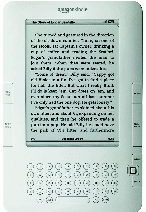NEC Out, Then Back In the LCD Business
After making a surprising statement to the contrary, NEC has quickly reaffirmed its commitment to the LCD business. What constitutes that business, however, depends on the NEC subsidiary in question.
It all began on January 30, 2009, when NEC Corp. released its consolidated financial results for the 9 months ending December 31, 2008. As is no surprise in a harsh economy, the company reported losses. More unsettling was the news that NEC planned to lay off approximately 20,000 workers over time. But a few words on the right-hand side of Slide 21 of the company's presentation to investors took many in the display industry by surprise. That slide, entitled "Business Portfolio Reform" showed environmental and energy-related business as growth areas, whereas "LCD-related businesses, etc.," were labeled as exiting areas.
A great deal of speculation ensued – both in the media and at companies, especially those that use NEC LCD modules for their own products. NEC was temporarily unavailable for comment. However, on February 2, the Monday immediately following the Friday announcement, the company posted a letter from NEC Display Solutions President Yoshikazu Maruyama on its Web site, re-affirming the company's commitment to the LCD-monitor and LCD-projector businesses.
That same day, NEC Display Solutions of America President Pierre Richer, in an interview with GEARlog (www.gearlog.com), stated that NEC Display was "not going anywhere." He also made the point that NEC Display's emphasis would be on making monitors that use LCD components sourced from other suppliers and that this was not a particularly new development.
What Richer's comment did not address (nor was it meant to) were possible changes over at NEC Electronics America, a subsidiary that markets and sells industrial-style active-matrix LCD modules incorporating panels that NEC does, in fact, make itself. NEC Corporate's statement had been that the company was committed to the LCD monitor and projector business. Did this mean that the module business was about to change?
In fact not. "Business as usual" was the message when Information Display spoke with Omid Milani, Director of Displays for NEC Electronics America. Recent corporate statements from Japan "have no effect on what we are doing," said Milani, who went on to state that NEC Electronics will continue to produce the LCD modules that are vital to its specialized industrial, medical, and other customers. He added that the company is keenly aware of its long-term commitment in a market where these customers would find it difficult to locate similar suppliers in a timely fashion.
Asked why he thought that the statement about exiting the LCD business appeared in the earnings presentation, Milani said that he could not speak for NEC's global LCD business. "This is a $46 billion company with over 100 subsidiaries," he said.
Paul Semenza, Senior Vice President for market-research-firm DisplaySearch, also believes that in the U.S., at least, NEC's display-panel business is ongoing and that any announcements of its demise were premature. "My best guess is that some internal thinking worked its way into the presentation," said Semenza. And, in fact, while he estimates that NEC's share in the LCD market worldwide is probably less than 1% overall, and may well have attracted corporate scrutiny on that account; in North America at least, NEC caters not just to end users but to those aforementioned highly specialized industrial and medical customers. "It's a decent little business for NEC," he said.
–Jenny Donelan
Kindle 2: Ultra-Thin, Ultra-Low Power
Amazon's latest version of the Kindle e-book reader continues to generate consumer excitement even in a bad economy and was selling out at $359 a pop even before its official ship date in February 2009. The Kindle 2 is slimmer than its predecessor at just over a third of an inch. It stores 1500 titles compared to the original model's 200 and has a 25% longer battery life. According to Amazon, the new unit will enable customers to read for 4 or 5 days on only one charge with the wireless feature turned on and for more than 2 weeks with wireless turned off.
The Kindle 2's 6-in. 600 x 800 electronic-paper display, which is based on technology from E Ink Corp., now has 16 shades of gray, as compared to the original's four shades of gray. The new reader will also enable pages to turn an average of 20% faster.

Early reviewers reported that the Kindle 2's new screen offers improved text legibility and image clarity. Image courtesy of Amazon.
Reviewers have praised the Kindle 2's revised navigational buttons (it's not as easy to inadvertently advance a page), the USB charging capability, and the new text-to-speech function (though the latter has generated a partial stir about authors' audiobook copyrights). One less popular change includes the lack of a protective cover (the original shipped with one) that must be purchased separately.
What's in store for the next Kindle, Amazon isn't saying. When asked about plans for larger screens, color versions, or other new features, the answer is that there is no answer. One thing is for sure; this little monochrome e-reader is a bright spot in a mostly dismal retail environment.